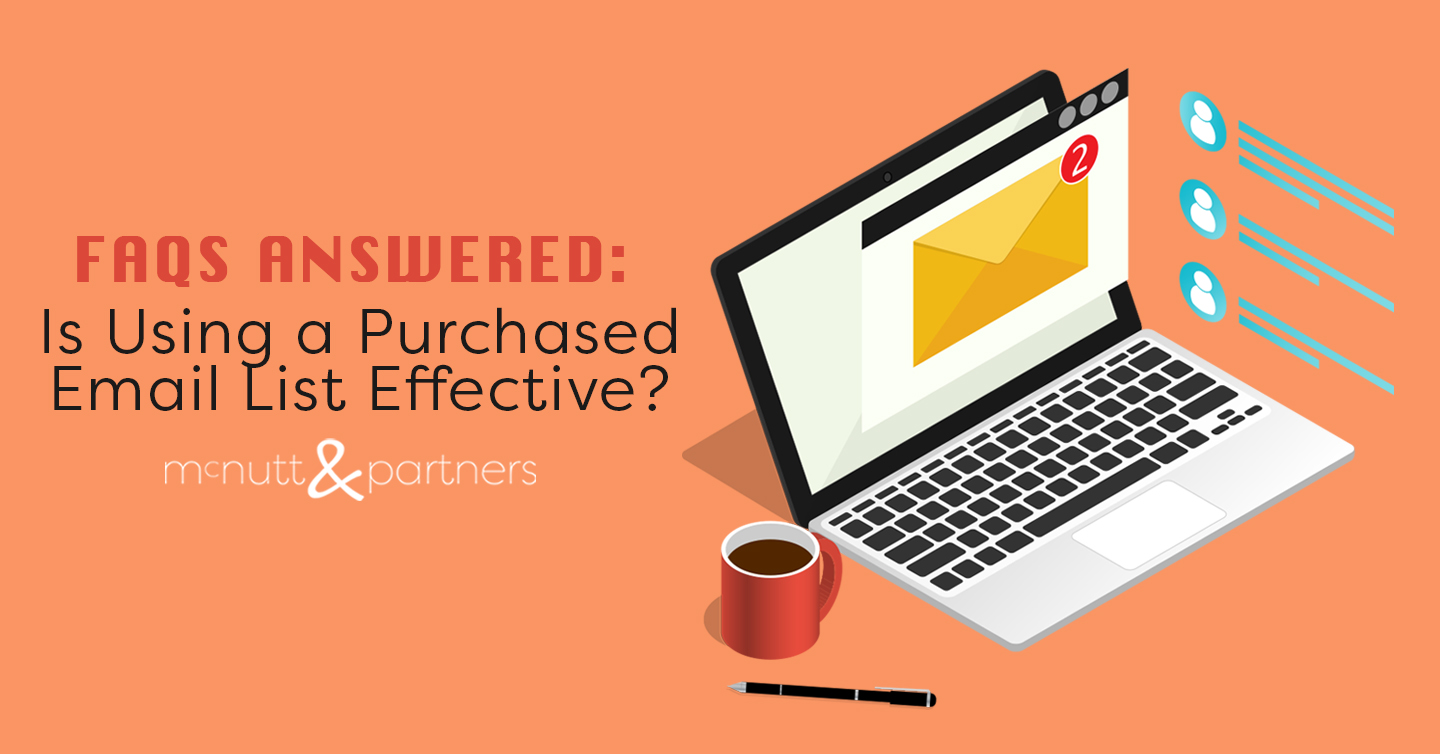With many instantaneous forms of digital communication at our disposal, some might speculate as to whether email is still a viable means of marketing. Our short answer—it is, and the potential ROI of email marketing supports that case. When starting from scratch, often our clients ask us about the best way to go about curating an email list—specifically, whether a purchased email list could be useful. Here’s our take.
The drawbacks of using a purchased email list
There, we said it—plain and simple—blog over!
Just kidding. But not kidding about not using a purchased email list.
Buying a list of emails to send marketing material to sounds easy and appealing, but often the easiest way is not the best way. Purchasing an email list will actually do more harm than good in the long run, including the fact that it:
- Costs unnecessary money
- Can lead to you being labeled as a spammer (sending to unsolicited addresses)
- Does not ensure that the recipients on your list fall into your target audience
- Can sometimes include old or fake email recipients—which is a waste of money spent
- In general, is not a credible way to cultivate an email audience that will give you results
How should I build an email list?
When you’re not using a purchased email list, then the good news is, you can feel confident knowing that you collected your emails legitimately. You have complete control over your list and who sees your content, which is not always the case in other forms of digital marketing like social media.
Building an email marketing list is not something you should expect to accomplish all at once, but with the help of multiple efforts over time. Here are a few easy strategies.
Ask existing customers to opt-in.
If you have a set of loyal customers, let them know that you are starting an email list for your brand, and ask them if it would be OK to include their address on that list. They’ll most likely be happy to support you.
Set a physical sign-up list at your point of sale or events.
A good old fashioned clipboard and pen never hurt anybody. Set one out on your welcome counter, point of sale, or on your table at events your business is participating in. If you want to take it a step further, you could also use an iPad or tablet for sign-ups.
Give an incentive for people to sign up for your list.
Incentivize, incentivize, incentivize. Offer special discounts or offers to members of your email list. This could be as informal as “sign up and get 20% off your next purchase” or as detailed as an ongoing customer loyalty program with offers exclusive to members of the email list on a regular basis.
Include opt-ins on your digital assets.
Don’t miss opportunities to remind people to sign up for your list. This could be in the form of a pop-up on your website, a prompt in your email signature or a request on a social post. Just be sure to give a short explanation as to why it might benefit someone to sign up.
Distribute content that will keep people interested.
Quality content to quality recipients equals a great email marketing strategy! Whether you’re sharing your monthly blog post or giving people a company update, content that people appreciate bodes well for maintaining a strong list—and could even lead to word-of-mouth sign-ups.
Summary
Using a purchased email list will almost always lead to more bad news than good. It’s best to build an email list organically to certify quality leads and consumers that are actually interested in your brand’s content.
McNutt & Partners is a full-service advertising and digital marketing agency. Contact us today for your marketing needs! Call 334-521-1010, or visit our contact page.

